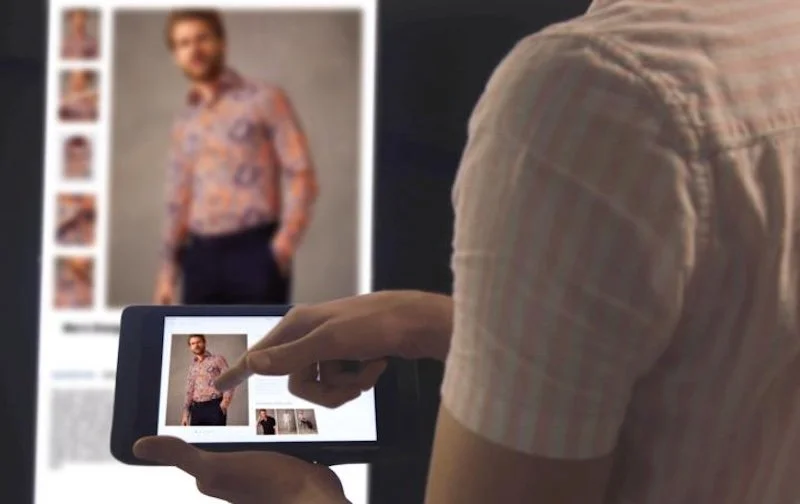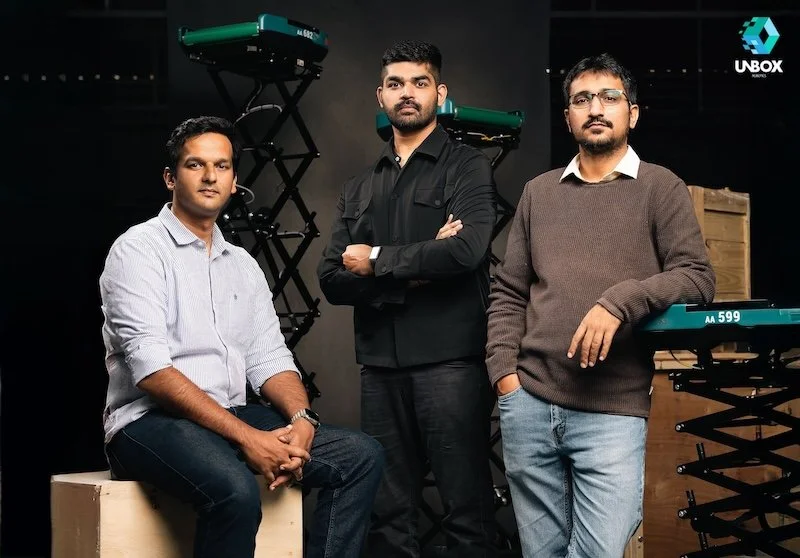Retail Technology Startup Stories Interview: Everseen Founder and CEO, Alan O'Herlihy
RTIH gets the lowdown on Everseen, a computer vision AI company whose tech is in over 6,000 retail stores, with 80,000+ checkouts, from Alan O'Herlihy, Founder and CEO.
RTIH: Tell us about yourself and Everseen
AOH: As a teenager, I worked in our family grocery store - a modest business that served the heart of our village just outside Cork in Ireland.
My grandfather, and later my dad, also had a full mobile shop on wheels delivering to the local community. Back then, we had no idea what ‘shrink’ was, as my parents didn’t know what the profits were until they did an end of year stock take. Everything was hidden in the numbers. It was a silent business killer.
Although I was no stranger to the problem, it was only years later when I was working in SAP that I had the ‘a-ha’ moment. I realised there was a game-changing approach to fight shrink and the idea for Everseen was born - to apply computer vision to critical business processes to see (and understand) what the human eye couldn’t and solve problems as they arose.
I started Everseen in 2007 and today shrink is growing at an alarming rate. It impacts retail businesses of all sizes to the tune of $100 billion in losses every year, driving store closures and devastating entire communities.
RTIH: What was the inspiration behind setting the company up?
AOH: Everseen was born from my combined passion for invention and my ability to lead massive software installations. From the very beginning we set out to create a computer AI platform with the understanding that technology could see more than the human eye ever could.
Over the last 15 years we have grown by adapting to emerging technologies and learning through the challenges. Retail is a sector that is hugely impacted by loss and has low margins so the threat of closing stores is always lingering. Our obsession at Everseen is designing solutions to give retailers a fighting chance to counteract shrink.
Using computer vision AI effectively and efficiently, they can significantly reduce shrink and, more importantly, recover losses as they happen.
RTIH: What has been the industry reaction thus far?
AOH: Our computer vision AI technology has been very well received. Everseen is trusted by over half of the world’s top 15 retailers - deployed in over 6,000 major retail stores and at 80,000+ checkout lanes.
Retailers are turning to AI to address loss prevention and simultaneously deliver a great customer experience.
We have stayed true to our original vision, delivering insights that help retailers to see and solve complex challenges in real-time. In doing so, we have helped our customers significantly reduce losses while improving margins by up to 20%.
One of our most successful customers began with a pilot implementation in just a few stores, then expanded to over a thousand. After successfully integrating AI into its operational and shopper experience at the checkout for a few months in 1,800 stores, it is now progressing to have AI-based loss prevention in place in more than 2,600 stores.
This customer started using computer vision AI for loss prevention at the checkout and is now exploring using the same technology in the heart of the store for shelf availability and in the backroom for deliveries.
We doubled our store installations in the last year, with growth driven by expansion with grocery retailers in the US, Europe, and Australia. We have expanded our technology partner programme to integrate computer vision AI into existing solutions used by retailers.
Partnerships now include Dell, Lenovo, Nvidia, Qualcomm, and others. Everseen’s solutions are tech agnostic, seamlessly integrating with customers’ existing camera, computer hardware, Point of Sale, and other business systems.
RTIH: What has been your biggest challenge/setback?
AOH: A great deal of misinformation and hype about what AI can do is a challenge.
Every example of AI failing to deliver value to businesses that have been over promised, has a negative effect on those that have proven measurable return on investment for customers.
There is a huge difference between going from a ‘good idea’ to being properly scaled and able to deliver real value, and many AI providers are claiming more than they actually have, which undermines the credibility of the whole industry.
We know how to scale an installation as the needs of a business grow, and this is probably where most of our competitors fall behind.
The pandemic really shined a light on new shopping behaviours that retailers had to adjust to. Suddenly self-checkouts that were made for 10 items or less were being used to check-out 50+ items.
With this change came more challenges, but now there was an even bigger need to fulfil our vision and allow retailers to “see everything” happening in their store so they could identify where loss was happening.
RTIH: What are the biggest challenges facing retailers right now?
AOH: Retailers are grappling with the impact of multiple challenges caused by inflation and the rising cost-of-living. From declining customer spending and rising operational losses (including shrink), to labour shortages and labour cost inflation, these issues can be addressed with technology.
The retail industry’s shrink problem is estimated to grow at 20% every year and computer vision AI can tackle that as well as improve customer service and optimise productivity. We achieve that by processing and analysing video in real-time, while monitoring 220 million products and 22 million customer interactions per day.
This type of monitoring also allows us to tackle the rising concern around organized retail crime (ORC). While adding convenience for shoppers, self-checkouts have created a pathway for ORC and this is where we see a healthy chunk of loss is happening.
Many eyes are needed to spot all of these behaviours simultaneously and computer vision AI can do that better than any human. But just solving the problem at the self-checkout isn’t enough because it will only push theft to other parts of the store.
This is why a holistic solution that can see what is happening at the shelves, in the aisles, at the backdoor and elsewhere, is needed to be able to see everywhere that theft could be happening and furthermore, contextualise how it is being done.
This is another advantage of artificial intelligence that can learn over time and be adapted to other parts of the store and beyond.
RTIH: What's the best question about your company or the market asked of you recently by a.) an investor and b.) a customer?
a) Why is now the right time to invest in Everseen?
The mainstream accessibility of AI and machine learning technology has emerged as one of the biggest trends over the last year and is being valued by the market.
We believe computer vision AI represents significant value in transforming business processes moving forward, and Everseen has emerged as a clear leader in this space, providing immediate and measurable impact on the customer P&L.
While a lot of other companies will demonstrate their tech in a lab, Everseen does it in the retail world. Our lab is 6,000 retail stores where our computer vision AI technology is installed.
b) How are your products and features different from other solutions?
Our AI powered computer vision and hyper automation solutions create the ability to see problems and solve them as they happen.
We use computer vision AI at the edge to transform a physical retail space into valuable and actionable data providingthe missing context needed to make decisions and solve problems in real-time. This reduces unnecessary friction and removes mundane and repeatable tasks that can otherwise be automated.
Our technology solves core business challenges to improve business outcomes; such as mitigating and reducing shrink, streamlining operations, and helping to deliver a better customer experience.
Our real-time systems dynamically deliver intuitive fixes and split-second decision-making (less than 300 millisecond response time), resulting in unrivalled prevention, deterrence, and intervention – whether these are shrinkage problems due to theft, errors, waste, or accidents.
Our AI models can understand the moving scene unfolding, not just a frame, by detecting and tracking objects of interest, analyzing how objects interact and recognising actions of interest performed by humans.
All of these elements serve as key input allowing our solution to “nudge” a customer to self-correct or instruct a store associate to engage and aid the customer in question.
For example, we have been able to reduce the need for interventions at self-checkouts from about 20% of the time when weighing scales are present to less than 2% with computer vision AI.
Our goal is to stop and recover loss, enable the retailer to intervene with bad behaviour, promote great customer interactions, creating fluid processes, while improving the overall customer experience and positively impacting the bottom line.
Our ability to handle complex data models and workflows, coupled with the ability to adapt to different data types and data processing requirements are two of the core pillars behind our Visual AI Platform approach.
Our global scale and reach have allowed us to develop a user-friendly, secure, and agile platform that is able to connect with other systems and tools such as BI tools, data warehouses, ERP and other order management systems.
RTIH: What can we expect to see from Everseen during 2023 and beyond?
AOH: Most computer vision solutions are currently very siloed and targeted at solving specific problems.
We are seeing increased demand for our Visual AI platform as customers are seeking to solve other problems (beyond shrink) across the retail store estate. Our recent investment will enable us to respond to that growing demand with a targeted product roadmap.
Our longer-term vision is to use our computer vision AI platform for any process and in any industry.
Starting with retail allowed us to develop both a foundation and library of computer vision AI use cases that are relevant for other (adjacent) industries (e.g. supply chain, manufacturing, etc.).















Continue reading…